Prisoners and the pandemic
Kept in overcrowded jails and low on the govt’s list of priorities, inmates left to fend for themselves amid Covid-19
PAKISTAN:At the very beginning of the Covid-19 outbreak, in the midst of growing panic within the country, as leaders debated locking down the country, those who were already locked down and cast aside by society, were forgotten. Incarcerated prisoners and those awaiting trial fell pretty low on the rung of priorities and were left to fend for themselves inside the overpopulated jails across the country.
To investigate the matter, Amnesty International, in collaboration with of Justice Project Pakistan (JPP), conducted a series of interviews with recently released prisoners who had been detained during the pandemic. The subsequent report titled, Prisons of the Pandemic, published on December 14, 2020, identified prisons as places where outbreaks were not only more likely but would also require urgent government intervention.
According to the Sindh Prison’s department report, currently out of 22, 319 prisoners tested across various prisons across the province, 2,994 have tested positive.
Moreover, Federal Ombudsman, in its progress report on prison reforms, revealed to the Supreme Court that 84,685 prisoners were detained in 116 jails all over the country — an astoundingly a higher number than its total capacity of 64,291.
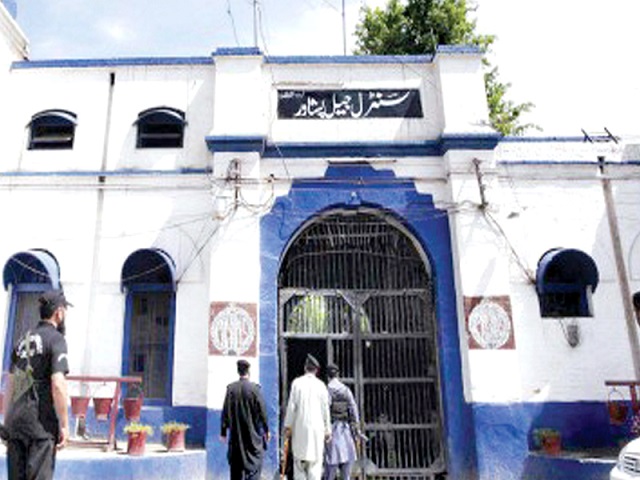
PHOTO: AGENCIES
Curiously, the Federal Ombudsman’s report asserts that there are only 500 prisoners currently affected with coronavirus. That same report also goes on to state that there are only three total cases of Covid-19 in Punjab jails, which seems a little suspect when there are 43 prisons in the heavily populated province. However, human rights organisations, which are working on the welfare of prisoners, are questioning the authenticity of these numbers. Amnesty International has also raised concerns about the lack of transparency in the official reporting of Covid-19 cases within Punjab.
The Amnesty International report also informs that by August 2020, at least 2,313 prisoners had tested positive for Covid-19 all over the country. The report clearly states that prisons in Pakistan are notoriously overcrowded, making physical distancing and other public health recommendations impossible to implement. They lack adequate health care facilities and have unsanitary conditions, accelerating the spread of infectious diseases.
The World Health Organisation (WHO) issued explicit guidance to manage the Covid-19 outbreak in prisons and other places of detention including screenings, restricted visitation, quarantine protocols and the process to follow if prisoners are transferred. All of these highlight Pakistan’s international human rights commitments to ensure quality health care for prisoners in custody.
Even as the office of the United Nations High Commissioner for Human Rights (OHCHR) specifically warns against the dangers of overcrowding, police arrest practices and institutional reluctance to use non-custodial sentences create the permissive environment for the unconscionable overcrowding rate of 134 percent in Pakistan’s prisons. People are held for months in pre-trial detention, waiting to appear in courts mired in backlogs. As a result, the risk of contagion with a communicable disease such as Covid-19 is significantly heightened.
The report also states that the Covid-19 health crisis also brought the under-resourced and already strained health infrastructure inside Pakistan’s prisons to light.
The report found that there was continued intake of prisoners with little to no precautions to prevent transmissions. While recognising that a range of offences warrant arrest and detention and that Covid-19 should not provide cover to those who commit those crimes, the overuse of incarceration for minor offences is problematic in the context of a pandemic.
Despite a ruling from the Islamabad High Court to reduce the number of unnecessary arrests, no official steps were announced by the government to reduce prisoner intake or the pace of arrests for petty crimes. While Amnesty International and JPP were unable to confirm whether arrests took place at the same pace as prior to the pandemic, it is to be noted that that even during peaceful protests at political rallies, when arrests could have been avoided or limited, it remained common practice for police officers to apprehend peaceful protestors simply for exercising their rights to freedom of expression and peaceful assembly. This included arrests of health workers, students and even a transgender rights activist.
Also noted in Amnesty International’s report is that the lockdown imposed from April to June 2020, followed by court holidays, also forced courts to severely limit operations. Between April to August last year, the prison populations rose from 73,242 to 79,603, representing an 8.7 percent increase in prison intake.
Multiple prison authorities also informed JPP that the suspension of court operations was a great obstacle in preventing the spread of Covid-19 within prisons as no new releases could be ordered, overwhelming the already burgeoning prisons.
Former inmates interviewed by JPP highlighted the lack of preventive and protective measures during arrest and initial detention in police stations. Personal protective equipment (PPE), including masks, were not always provided, or even worn by the police themselves who were arresting them. Some detainees in the report however did confirm being kept in confinement as a form of precaution by the jail administration to protect them from the rest of the inmate population.
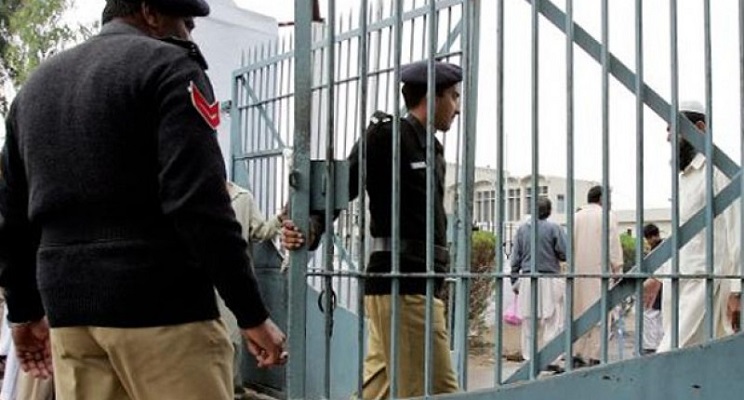
PHOTO: AGENCIES
Cut off from the outside world
Another important point noted in the report is that in March, at the beginning of the coronavirus outbreak, prison authorities banned all visits to prisons to prevent transmissions. Family visits were also not allowed for three weeks, and eventually this ban was extended. On 7 July 2020, after almost four months, families were allowed to meet the prisoners once every 15 days. Lawyers, however, were still not permitted to visit their clients in prison. This also made it difficult for prisoners to secure bail, negotiate early release or work their cases through the legal system.
Amnesty International report also says that interviews with former prisoners and family members point to insufficient measures to support prisoners to ensure continued communication with their loved ones. Even in prisons where additional public telephones were installed they were not enough to meet the overwhelming demand and were often too expensive for prisoners.
Access to food, water and sanitation in prisons is also precarious in the best of times. Given the shortage of food available in prisons, prisoners are allowed to seek home cooked food and other essential supplies such as medication from their families. These can be brought to them during visitation. However, the countrywide lockdown and ban on visitation made access to these supplies either completely impossible or very challenging.
In light of the report’s findings, Amnesty International and JPP called upon the authorities in Pakistan to reduce prison populations as a priority by strongly considering releasing pre-trial detainees, older prisoners who no longer pose a risk to society, prisoners with underlying medical conditions, and to follow through on any orders to implement early releases of women and children in prisons. Amnesty International also called upon authorities to immediately and unconditionally release all prisoners of conscience.
They also urged the police and lower courts must make efforts to systematically reduce prisoner intake and consider the use of non-custodial measures as alternatives to detention. They must also consider deferring the intake of new prisoners in appropriate cases and ensure that pre-trial detention is used as an exception.
The report also recommended, “Provincial governments take all necessary measures to ensure that conditions of detention do not violate Pakistan’s human rights obligations to protect detainees and uphold their right to health. They must also develop and enact a transparent policy and action plan to respond to ongoing and future outbreaks of infectious diseases. To protect and uphold the right to humane and dignified conditions of detention, any restrictions on the rights of people deprived of their liberty, including visitations, must be necessary and proportionate.”

PHOTO: AGENCIES
Reexamining Practices
The pandemic exposed the dire circumstances Pakistani prisons find themselves in - beholden to scarcity and defined by overcrowding. The urgency with which these must be addressed is heightened as the country finds itself in the midst of a second wave, with a sharper, even deadlier, rise in cases. Given the lack of transparency that surrounded the response to the first wave, it is difficult to ascertain how a higher number of fatalities were avoided within prisons. However, it should not take the death of prisoners to start taking steps to address the problem of overcrowding in Pakistan’s prisons.
Although all district and central prisons across Pakistan have hospitals, these facilities lack adequate equipment, human resources and medical supplies. Approximately 800 positions for essential medical staff are lying vacant across the country and filling these positions is essential in order to meet the existing healthcare requirements of prisoners.
Currently, in Punjab there are only 42 medical officers for treating 52,303 prisoners. Even prior to the outbreak, health screenings were inadequate, comprising only of a temperature and blood pressure check.
JPP also found that there was a wide disparity in screening and admission practices between different prisons. Quarantine times varied from five to 14 days and health check-ups seemed to have been based on an oral history assessment and a self-declaration health form. A prisoner interviewed recalled walking through a “disinfectant chamber” – a device WHO says should never be used.
Prison authorities confirmed that the continued inflow of prisoners made it impossible to separate prisoners, indicating that the duration of quarantine was based on capacity issues rather than guidelines prescribed by scientific evidence. Some prisons, such as Karachi Central Prison and Lahore District Jail, had to transfer inmates to other prisons to make room for isolation cells.
Even as symptomatic prisoners were kept in isolation, it does not appear that they were allowed to leave quarantine at all for fresh air. Moreover, JPP was also unable verify if special steps were taken by various prison administrations to prevent or curb torture treatment in isolation, which also underscores the need to allow independent monitoring of places of detention.
One way to reduce prison decongestion could have been through implementing schemes of early, provisional or temporary release of low-risk offenders, reviewing all cases of pre-trial detention and extending the use of bail for all but the most serious cases. International human rights organisations had also recommended this and when the first cases started being reported in Pakistan, announcements by authorities seemed to indicate that such recommendations would be swiftly implemented.
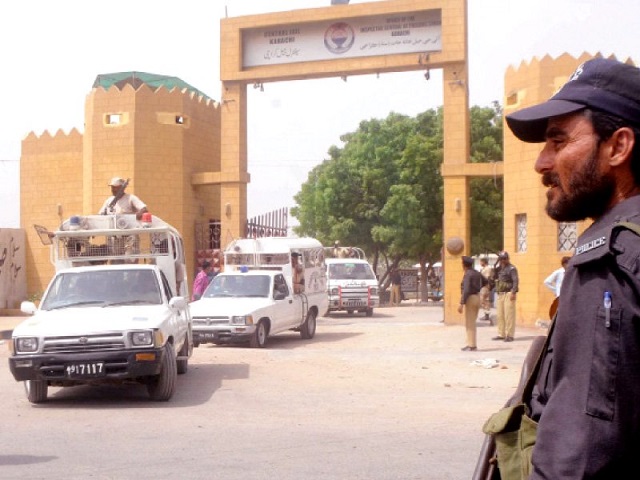
PHOTO: AGENCIES
At least 500 prisoners were released in the province of Sindh and the Islamabad High Court issued similar directives. For the first time, there was a national dialogue on the dangers of overcrowding in prisons. As was the case with all other existing practices across the world, from corporate work practices to racial discrimination, the pandemic also made us as a society face the fact that prisons are clearly overcrowded and there are many cases in which jail time can and should be avoided. However, a larger bench of the apex court led by Chief Justice of Pakistan Gulzar Ahmed on April 7 set aside high court’s orders regarding the release of prisoners. Human rights groups believe that the Supreme Court’s decision to put a halt to this countrywide momentum of reassessing imprisonment practices.
Leveraging a technicality regarding the authority of the lower courts, the Supreme Court’s strong rebuke to the lower courts had a chilling effect on the efforts to decongest prisons and even led to the re-arrest of prisoners who had been released in compliance with the directives of the Islamabad and Sindh High Courts.
In its decision though, the Supreme Court asked prison authorities to prepare a list of at-risk prisoners who could be considered for release. These included women prisoners, older prisoners above the age of 60, juveniles in pre-trial detentions, those who had served 75 percent of their sentence and those suffering from pre-existing conditions. However, it was five months later that Prime Minister Imran Khan ordered officials to implement the Supreme Court decision to release all women prisoners who were under trial, convicted of minor offences or who had served most of their sentences.
The Amnesty International also interviewed the Inspector General of Prisons in Sindh who highlighted the direct result the Supreme Court’s decision had on prison authorities’ ability to take measures to prevent contagion in prisons. “In the beginning [the situation] was easy to handle because almost 600 prisoners were released by the magistrates and sessions judges on the direction of the Sindh High Court, which made space in the prisons. It was easy to keep prisoners separate and maintain social distancing. However, when the Supreme Court ordered to cancel all the bails, 90 per cent of the [released] prisoners came back.”
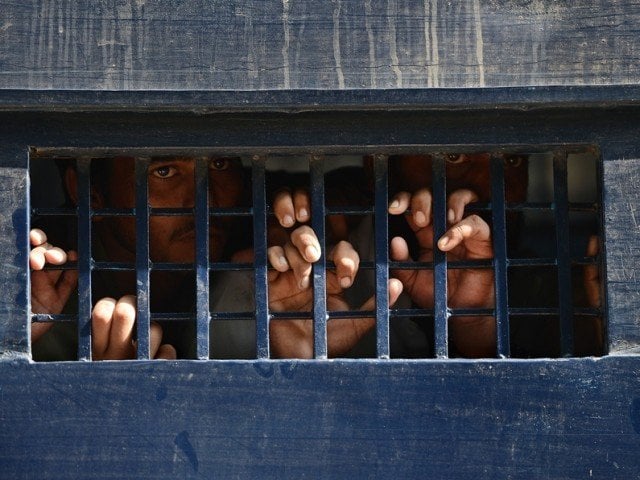
PHOTO: AGENCIES

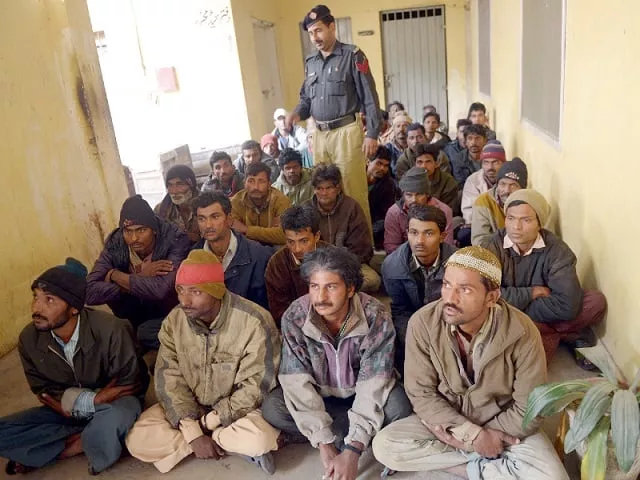
COMMENTS
Comments are moderated and generally will be posted if they are on-topic and not abusive.
For more information, please see our Comments FAQ